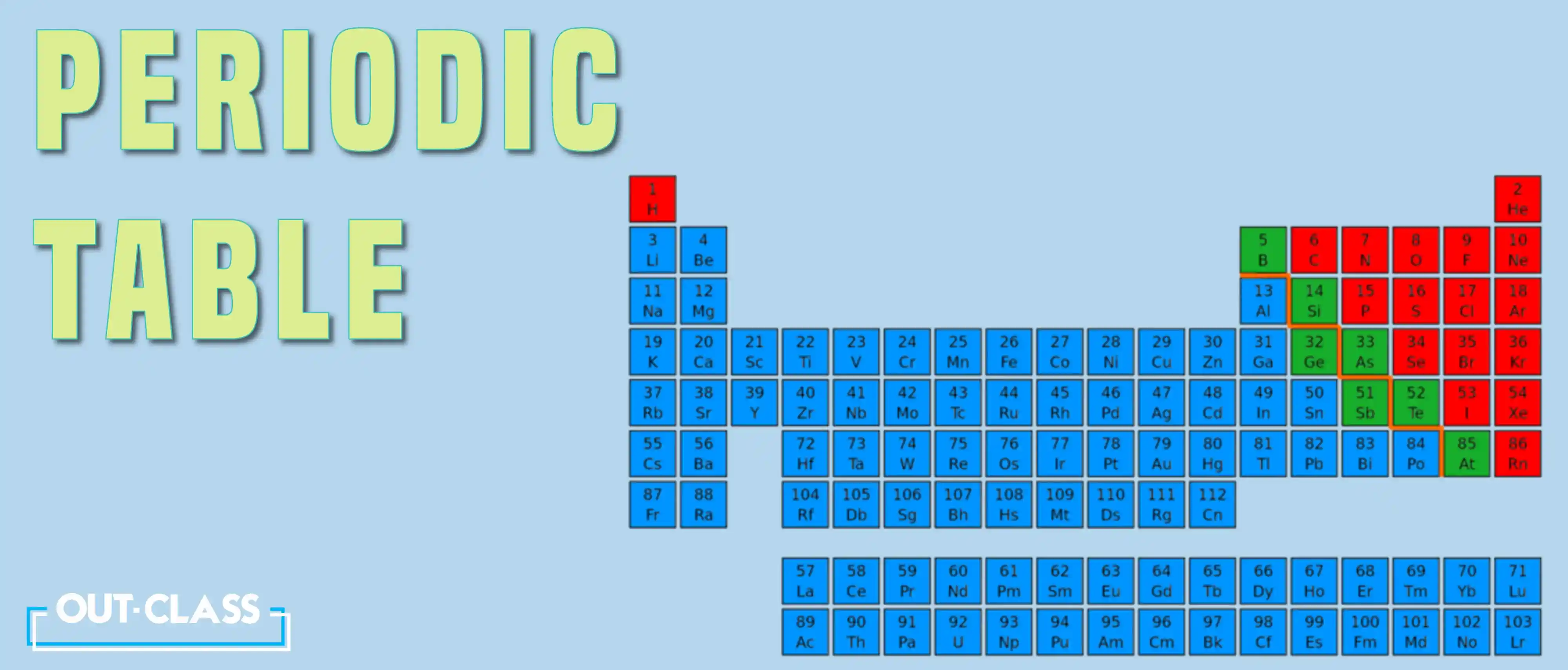Memorizing the elements of the periodic table can seem like a daunting task at first glance. However, with the right strategies and tools, you can master the names, symbols, and positions of the elements in the periodic table more easily than you might think.
This article will explore some of the most effective methods for learning the elements of the periodic table as a student of Cambridge O Level, IGCSE and A Level Chemistry.
Understand the Structure of the Periodic Table
Before diving into memorization techniques, it's essential to understand the structure of the periodic table and what the periodic table numbers mean.
Periods and Groups
-
Each row in the periodic table is called a period.
-
Each column in the periodic table is called a group/family.
Each period in the periodic table corresponds to an increase in the atomic number, moving from left to right and top to bottom.
The columns, known as groups or families, contain elements with similar chemical behaviors.
Summary of the Periodic Table Structure
In summary, the periodic table is organized by:
-
atomic number (increasing from left to right and top to bottom)
-
electron configurations (number of valence electrons are equal within a group)
-
trends in chemical properties (within groups and from left to right across a period)
#1: Use Mnemonics!
Mnemonics for the periodic table are a popular method to remember the order of elements.
For example, to memorize the first 13 elements, you can use the phrase: "Happy Henry Lives Beside Boron Cottage, Near Our Friend Nelly Nancy Mg Allen."
This phrase represents Hydrogen, Helium, Lithium, Beryllium, Boron, Carbon, Nitrogen, Oxygen, Fluorine, Neon, Sodium, Magnesium, and Aluminium.
#2: Learn with Songs and Have some Fun
Incorporating music can make learning the per more enjoyable and memorable. The Periodic Table Song is a popular video on YouTube that millions of students have used to memorize the order of elements in the periodic table.
#3: Build a Mind Map by Looking at Periodic Table Families
Understanding what are periodic table families can greatly aid memorization. Elements in the same family have similar properties and often end in the same electron configuration in their outer shells.
For example, the noble gases are grouped together in the right-most group, group 18, whereas halogens are grouped in group 17. Knowing this, you can memorize the top-down order of these common families to build a mental image of the periodic table.
#4: Use Flashcards and Apps for Help
Flashcards are an excellent study tool that can be particularly useful for memorizing the elements of the periodic table. You can create your own set with the element's name on one side and its atomic number, symbol, and other relevant information (like whether it's a metal or nonmetal) on the other.
And there are numerous apps on the App Store or Play Store which have such flashcards pre-made for you, along with quizzes to test your knowledge. Search for applications like this!
Remember the Concepts for Quizzes
Memorizing the periodic table is not just about memorizing the order of elements. You should also be familiar with some key piece of information that you can be asked in exams.
Find these in the FAQ section below!
Conclusion
Using the strategies mentioned above, you can significantly enhance your ability to recall the elements of the periodic table. Remember, consistent practice is necessary!
If you found this guide useful, check out Our-Class's top-rated O Level / IGCSE Chemistry course here! It has short, structures videos, that cover all the important details that you need for acing your IGCSEs and O Levels!
FAQs
Q. What do periodic table numbers mean?
They represent the atomic number of each element, indicating the number of protons in the nucleus of an atom. Note that each element also has a mass number that is separate from the atomic number. It denotes the total number of protons and neutrons in the atom of that element.
Q. What are the main components of the periodic table structure?
The periodic table is organized by atomic number, electron configurations, and trends in chemical properties within groups and periods.
Q. Who created the periodic table?
Dmitri Mendeleev, a Russian chemist created the initial periodic table.
Q. What is a cation on the periodic table?
A cation is an ion with a positive charge, formed when an atom loses one or more electrons.
Related: Difference Between Cations and Anions
Q. What are the first 20 elements of the periodic table?
The first 20 elements, in ascending order of proton number, are:
- Hydrogen
- Helium
- Lithium
- Beryllium
- Boron
- Carbon
- Nitrogen
- Oxygen
- Fluorine
- Neon
- Sodium
- Magnesium
- Aluminum
- Silicon
- Phosphorus
- Sulfur
- Chlorine
- Argon
- Potassium
- Calcium
Q. How to learn the modern periodic table effectively?
Combine various methods like mnemonics, songs, and flashcards to find what works best for you, and understand the underlying concepts and structure.
Q. How can mnemonics help in memorizing the periodic table?
Mnemonics are memory aids that use associations to help remember information. They can be phrases or sentences that represent the order of elements in the periodic table.



